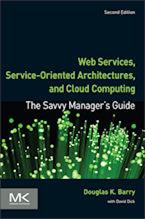Organization for the Advancement of Structured Information Standards (OASIS)
OASIS is a not-for-profit, global consortium that drives the development, convergence, and adoption of e-business standards. Members themselves set the OASIS technical agenda, using a lightweight, open process expressly designed to promote industry consensus and unite disparate efforts. OASIS produces worldwide standards for security, Web Services, XML conformance, business transactions, electronic publishing, topic maps, and interoperability within and between marketplaces. OASIS also hosts XML.org, which provides information about the application of XML, and The Cover Pages, which is a reference collection supporting the SGML/XML family of markup language standards and their application.
OASIS Web Services Specifications
- Application Vulnerability Description Language (AVDL)
- Asynchronous Application Service Protocol (ASAP) for SOAP
- Business Centric Methodology (BCM)
- Business Process Execution Language (BPEL)
- Business Transaction Protocol (BTP)
- Common Alerting Protocol (CAP)
- Content Assembly Mechanism (CAM)
- Directory Services Markup Language (DSML)
- eXtensible Access Control Markup Language (XACML)
- eXtensible Resources Identifier (XRI)
- eXtensible rights Markup Language (XrML)
- Public Key Infrastructure (PKI)
- Security Assertion Markup Language (SAML)
- Service Provisioning Markup Language (SPML)
- Universal Business Language (UBL)
- Universal Description, Discovery, and Integration (UDDI)
- User Interface Markup Language (UIML)
- Web Application Security (WAS)
- Web Services Component Model (WSCM)
- Web Services Distributed Management (WSDM)
- Web Services for Interactive Applications (WSIA)
- Web Services Reliable Messaging (WS-ReliableMessaging)
- Web Services Reliability (WS-Reliability)
- Web Services for Remote Portlets (WSRP)
- Web Services Resource Framework (WSRF)
- Web Services Security (WSS)
- XML Common Biometric Format (XCBF)
OASIS XML specifications
OASIS XML common vocabularies
- Controlled Trade Markup Language (CTML)
- eXtensible Customer Information Language (xCIL)
- eXtensible Customer Relationships Language (xCRL)
- eXtensible Name Address Language (xNAL), including xNL and xAL
- HumanML
- Topic Maps Published Subjects for Geography and Languages (GeoLang)
- Translation Web Services
- Universal Business Language (UBL)
- XML Localization Interchange File Format (XLIFF)
OASIS XML specific vocabularies
- DocBook
- Election Markup Language (EML)
- LegalXML Electronic Court Filing
- LegalXML eContracts
- LegalXML eNotary
- LegalXML Integrated Justice
- LegalXML Legislative Documents
- LegalXML Online Dispute Resolution (OdrXML)
- LegalXML Subscriber Data Handover Interface (SDHI)
- Open Building Information Xchange (oBIX)
- Open Office XML
- Production Planning and Scheduling (PPS)
- Tax XML
More information: OASIS website.
Context for Organization for the Advancement of Structured Information Standards (OASIS)
Related Articles for Organization for the Advancement of Structured Information Standards (OASIS)
- Business Process Modeling Initiative (BPMI.org)
- Data Center Markup Language (DCML) Interest Group
- Distributed Management Task Force (DMTF)
- electronic business using eXtensible Markup Language (ebXML)
- Information Technology Research and Standardization Center (INSTAC)
- Internet Engineering Task Force (IETF)
- Java Community Process (JCP)
- Liberty Alliance Project
- Object Management Group (OMG)
- Open Applications Group, Inc. (OAGi)
- Open Geospatial Consortium (OGC)
- The Open Group
- RosettaNet
- Web Services Interoperability Organization (WS-I)
- Workflow Management Coalition (WfMC)
- World Wide Web Consortium (W3C)
- www.udef.com
- XBRL International
- XML/EDI Group
Author
Douglas K Barry
Principal
You may use this material for your work or classes. Reprint Policy. Be sure to check the menu at the left for other articles available on this site.
The Savvy Manager's Guide
Douglas K Barry is also the author of a book that explains Web Services, service-oriented architecture, and Cloud Computing in an easy-to-understand, non-technical manner.
Web Services, Service-Oriented Architectures, and Cloud Computing: The Savvy Manager's Guide (Second Edition)
by Douglas K Barry with David Dick
This is a guide for the savvy manager who wants to capitalize on the wave of change that is occurring with Web Services, service-oriented architecture, and—more recently—Cloud Computing. The changes wrought by these technologies will require both a basic grasp of the technologies and an effective way to deal with how these changes will affect the people who build and use the systems in our organizations. This book covers both issues. Managers at all levels of all organizations must be aware of both the changes that we are now seeing and ways to deal with issues created by those changes.

